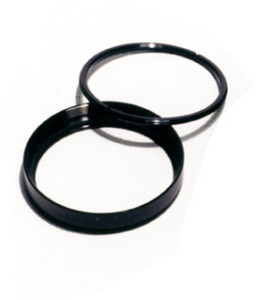In the medical field, a fluorophore is a fluorescent dye that is utilized to highlight cells, proteins and tissues to enable the radiologist to be able to “read” the fluorescent label for examination by fluorescence microscopy. The dye absorbs the specific wavelength of the cell, protein or tissue, converts its wavelength and transmits it visually through the microscope.
The fluorophore absorbs energy through a high frequency ultraviolet wavelength and then emits energy at a lower frequency of the color spectrum. The individual fluorophore has a wavelength at which it absorbs energy most efficiently; it also has a

corresponding wavelength at which the maximum amount of absorbed energy is re-emitted. To effectively capture these wavelengths the radiology technician will use a fluorescence microscopy with three optical filters to capture the information.
One of these filters, the excitation filter, is placed within the illumination area of the fluorescence microscope as a way to filter out wavelengths of a particular light source – other than the one being examined.
When configuring the fluorescence microscope, an emission filter will be placed in the imaging path of the microscope. This emissions device will filer out the excitation range and transmit that through the fluorophore. The emission filter provides the clearest possible images and provides the deepest blocking of outside images.
The fluorescence microscope will also be fitted with a beam splitter or a dichroic filter. This will be placed between the emission and the excitation filter to help reflect the excitation signal toward the fluorophore and move the emission signal toward the detector device.
When you are in the market for lenses and filters for your precise uses and devices, contact the lens manufacturer and design professionals from Universe Kogaku.